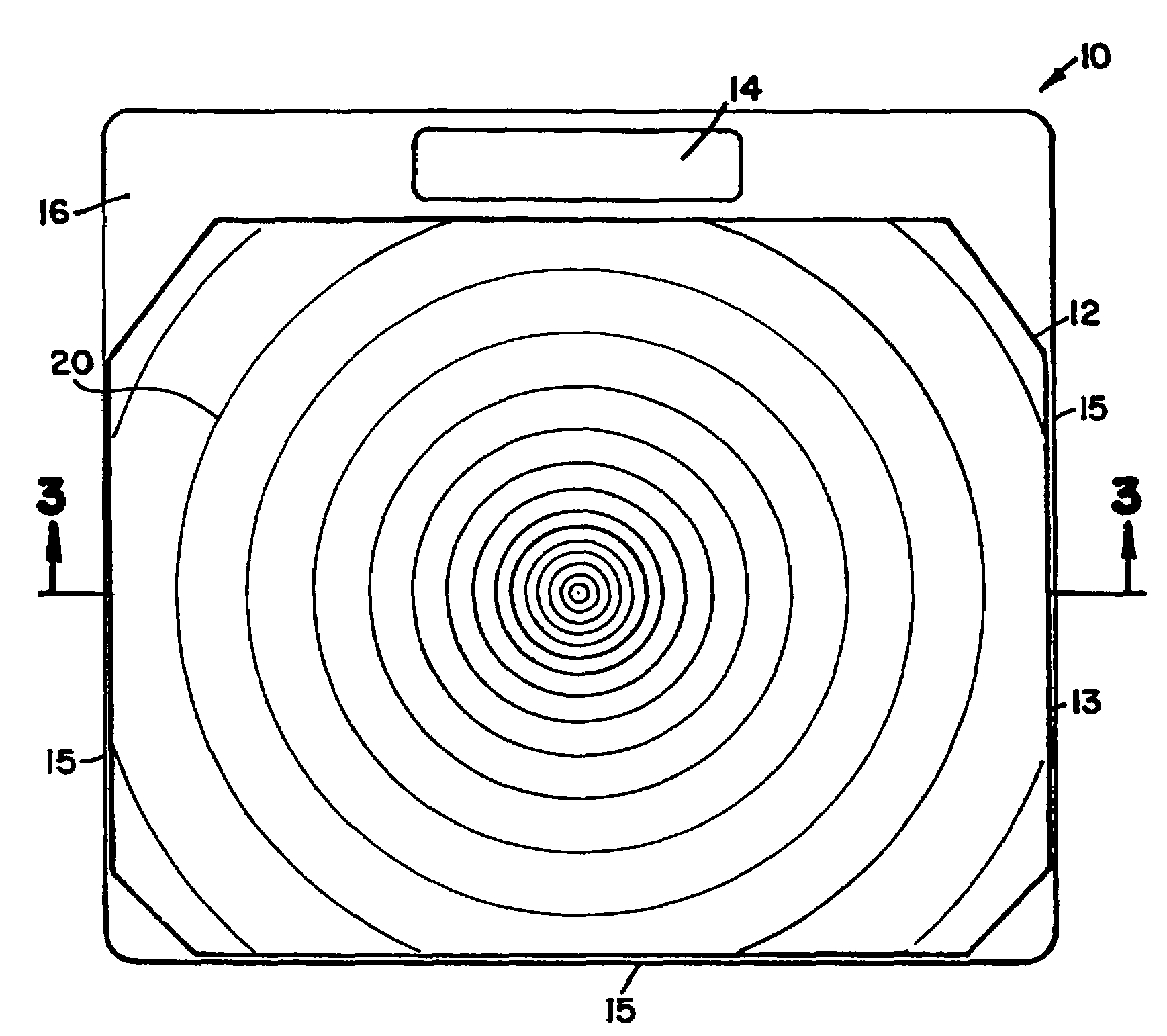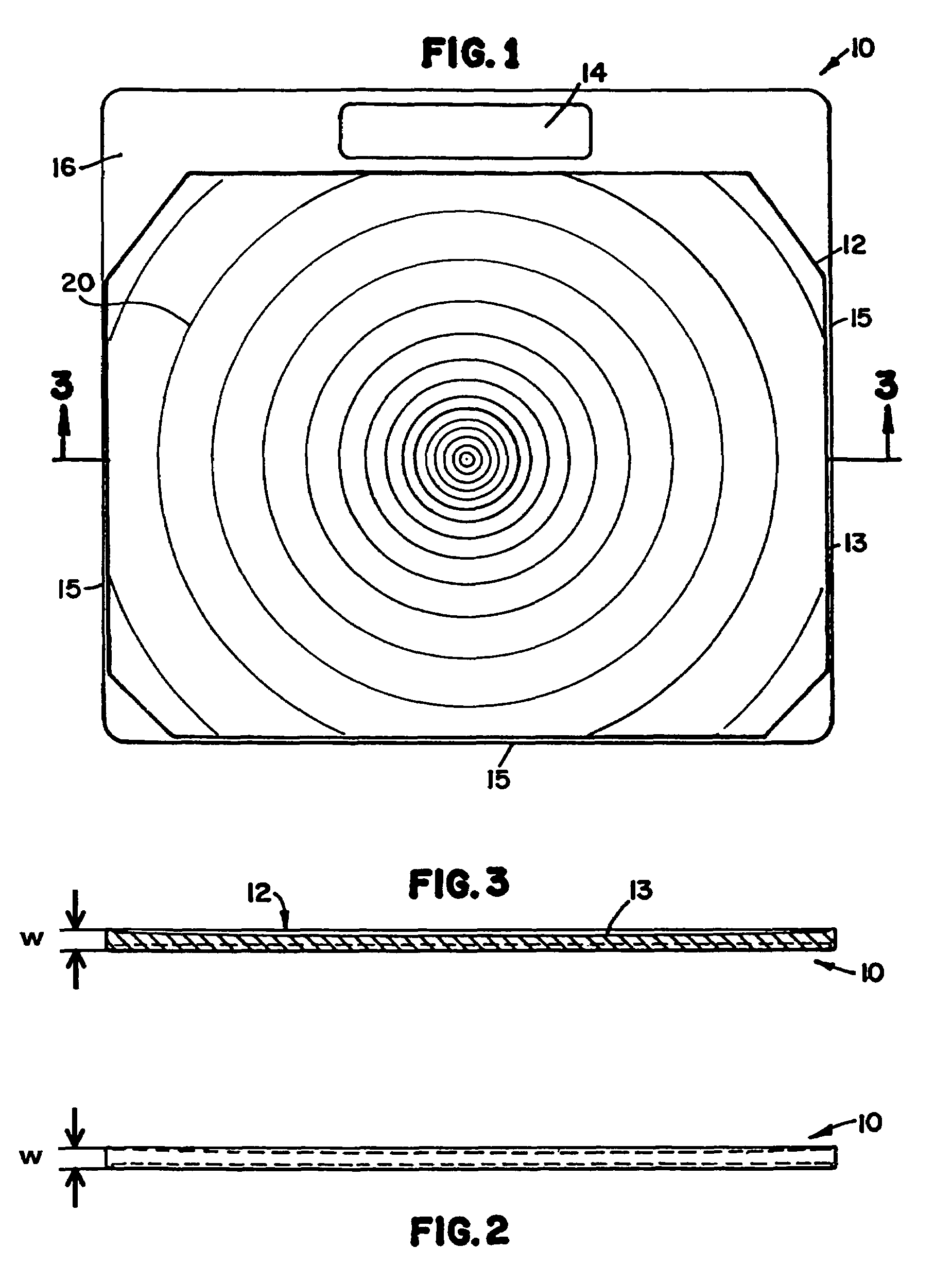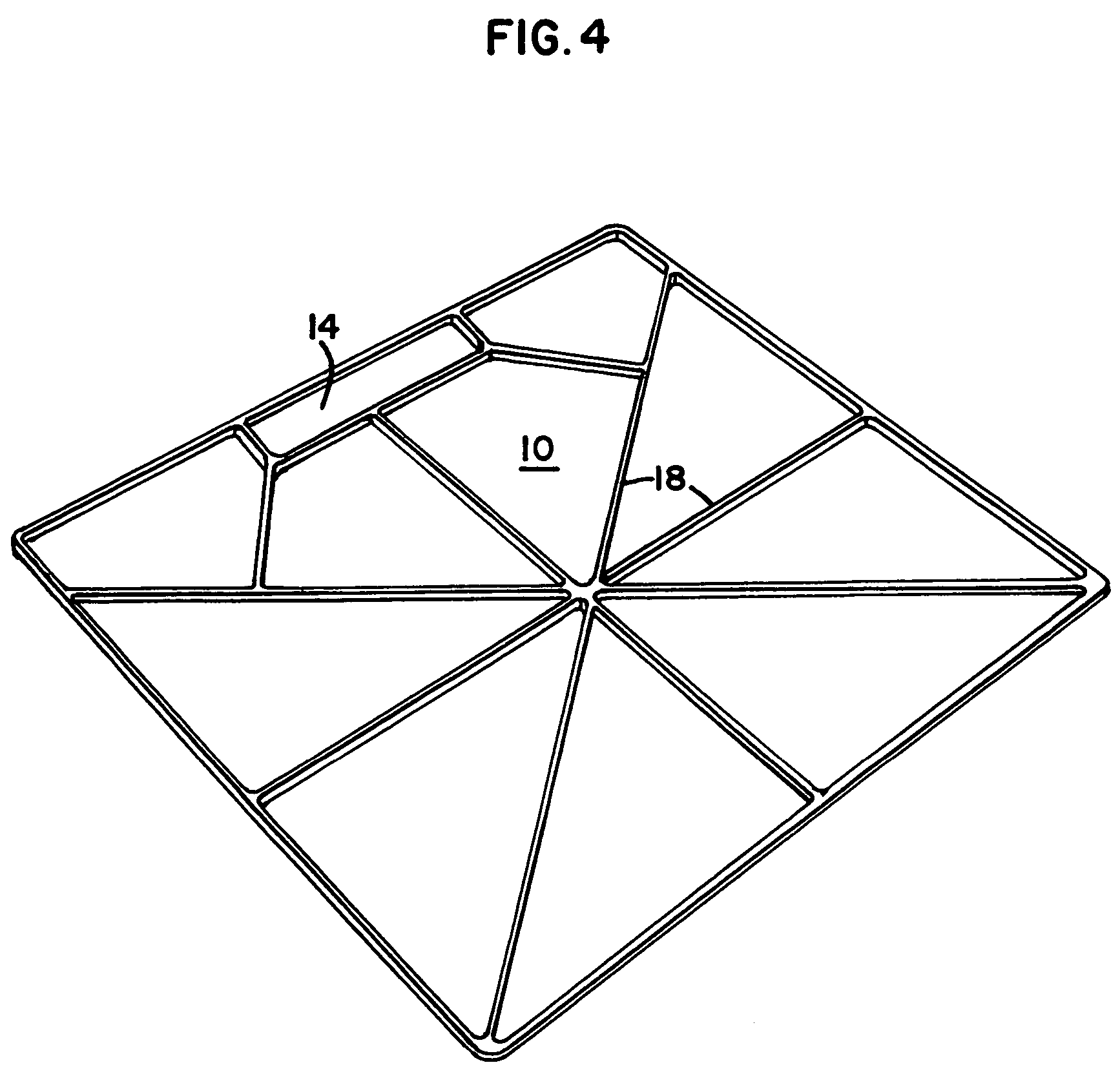Mortarboard
a mortar board and masonry technology, applied in the field of mortar board configuration, can solve the problems of affecting the retention of materials, affecting the use of mortar boxes, troughs and bowls, and prone to fracture and splinter, and achieve the effects of reducing bonding, enhancing retention of materials, and being light and durabl
- Summary
- Abstract
- Description
- Claims
- Application Information
AI Technical Summary
Benefits of technology
Problems solved by technology
Method used
Image
Examples
Embodiment Construction
[0024]A first preferred embodiment of the mortarboard apparatus incorporating the principles of this invention is illustrated at 10 in FIGS. 1-4 and FIG. 8. The mortarboard is preferably made from a polymer material such as polyethylene, polypropylene, urethane, nylon, polycarbonate, ABS, PVC, or the like. Such polymers may be lightweighted with a blowing agent such as with nitrogen pellets, to create a structural foam structure, as is well-known in the art. The mortarboard 10 may be formed by known methods of constructing polymer material such as by injection molding, compression molding, roto molding, or other known methods. Such polymer materials provide significant strength, yet are relatively lighter in weight than previously used mortarboard material such as wood, steel or fiberglass. For example, a mortarboard configured as illustrated in the Figures might weigh as little as 5 pounds. Further, as constructed from polymer material, the mortarboard will not absorb water or mois...
PUM
 Login to View More
Login to View More Abstract
Description
Claims
Application Information
 Login to View More
Login to View More - R&D
- Intellectual Property
- Life Sciences
- Materials
- Tech Scout
- Unparalleled Data Quality
- Higher Quality Content
- 60% Fewer Hallucinations
Browse by: Latest US Patents, China's latest patents, Technical Efficacy Thesaurus, Application Domain, Technology Topic, Popular Technical Reports.
© 2025 PatSnap. All rights reserved.Legal|Privacy policy|Modern Slavery Act Transparency Statement|Sitemap|About US| Contact US: help@patsnap.com



